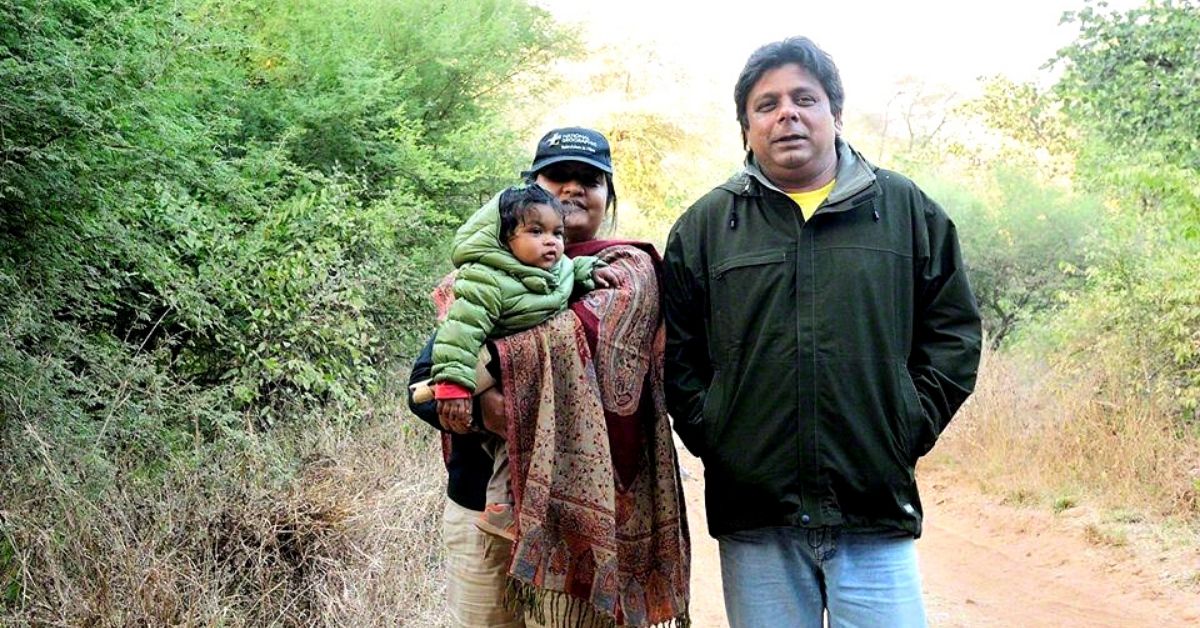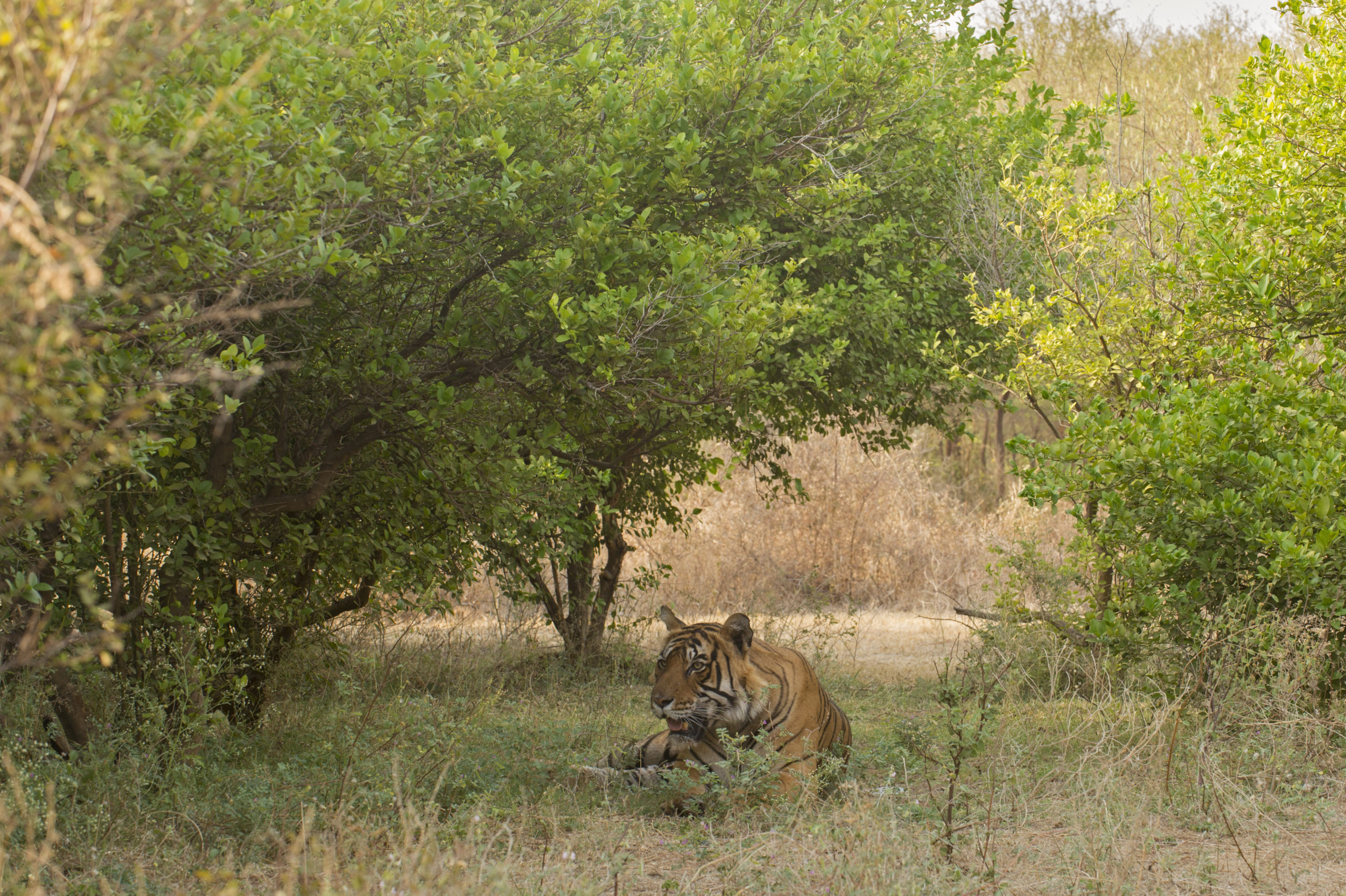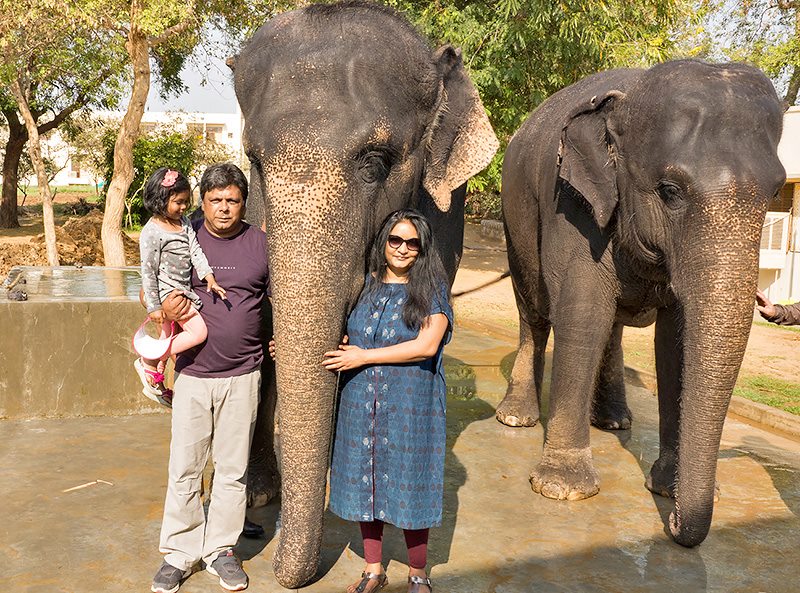Ex-Civil Servant and his Wife Build Thriving 35-Acre Tiger Reserve in 20 Years
"During a 1988 safari in Ranthambore Tiger Reserve, I spotted the famous tigress Machali. The sight was so enamoring that I never wanted to leave. Together, we decided to move and start our life there."

Editor’s Note: An earlier version of this story stated that Aditya Singh was an IAS officer. It is clarified that he is a 1992 batch UPSC CSS Officer and cleared UPSC CISF in 1993. The error is regretted.
In 1998, Aditya Singh was at the peak of a thriving career as a bureaucrat when he took the decision to quit it all, and relocate to Sawai Madhopur, a quaint forested town adjoining the Ranthambore Tiger Reserve (RTR) in Rajasthan. Naturally, the news stunned all he knew.
But there was no turning back for the man whose only motivation behind this life-altering decision was the love for wildlife.
It all started in 1984, when he visited the RTR for the first time as a tourist, and had a chance encounter with the majestic national animal. For Aditya, it was love at first sight with forests and wildlife. Though well-settled in Delhi back then, he couldn’t ignore the call of the jungle and visited the famous tiger reserve whenever he got a chance.
For his wife Poonam, an erstwhile sculptor and fashion artist, the love affair with the forest began four years later. “My first trip to RTR was in 1988. During the safari, I spotted the famous tigress Machali playing with three of her cubs. I was so enamoured with the sight that I never wanted to leave the place. Together, we decided to move to Ranthambore and start our life there,” recounts Poonam Singh, in a conversation with The Better India.
Quitting the Civil Services for The Love of Tigers

Aditya quit his job as an officer at the Ministry of Communications in Delhi and started his tryst as a wildlife photographer in Ranthambore. Meanwhile, Poonam Singh started a tourist lodge at Ranthambore Bagh, which offered visitors a serene experience of living in the jungle in perfect harmony with the animals.
Staying right outside the boundaries of the National Park, the couple noticed that a streak of tigers often frequented an area near their home. Though this was outside the buffer zone of the main forest, the animals often venture here in search of prey. The cattle of the local villagers and farmers were an easy target, causing a man-animal conflict scenario in the area.
“Anticipating more attacks on their community, the local farmers started selling away all their lands adjoining the tiger reserve. That’s when the idea struck us. We wanted to help grow a safe haven for the tigers beyond the designated national forest,” shares Poonam.
Creating a Safe Haven for Tigers from Fallow Land

The couple started buying land from the farmers at the edges of the National Park with the vision to restore its natural wilderness. In 2000, when Aditya was working with BBC on a wildlife documentary, he observed a tiger walking out into the land bought by them. It only reinforced their determination to work more efficiently towards protecting the tigers.
Starting from 2000, they have amassed over 35 acres of land till date which has been successfully rewilded into the Bhadlav Tiger Reserve – ideally an annexed wing of the Ranthambore sanctuary.
“We did not need to invest any extra effort. We simply allowed nature to take her course on the land. From stretches of barren fallow, the land slowly transformed into a beautiful forest before our eyes, complete with its own natural water holes for the animals. Our only contribution perhaps was fencing the outer boundaries recently to ensure that the tigers do not venture out into the human settlements anymore,” informs Poonam. 
The villagers would also face the problem of wild animals often destroying their farmlands. With the couple’s intervention, the farmers started farming in lands well away from the forested zones, thereby minimising the chances of human-animal conflicts.
Integrating the Local Community in Tiger Protection
However, in all fairness, one cannot rule out Aditya and Poonam’s contribution in creating this beautiful forest.
There was a time when the villagers would risk their lives to collect wood from the fast-growing forest and sell it as the only means of their livelihood. After months of rapport-building and local networking, the couple managed to convince them to refrain from deforestation and settle in alternate professions, including taking care of the forest.
In fact, the full-time forest guards now employed at Bhadlav all belong to the local village community who were trained and recruited by the couple.
Like Sumer, a 40-year-old forest guard at Bhadlav, who has been looking after the tigers there for the past two decades. Belonging to the local village of Bhadlav, he grew up watching the official forest guards and range officers frequent the Ranthambore reserve for activities like tiger census or treating an injured beast. He used to tag along with them out of sheer love for the wildlife. And that’s how he grew up to be an expert in tiger conservation.

“I started working at the Bhadlav forest right after my schooling. Like many of my fellow villagers, I have seen Aditya and Poonam Ji create the entire forest from nothing. They sought my help initially in managing the forest, and I have been happily working here ever since,” he shares.
In 20 years, Sumer has had several thrilling adventures and encounters with the tigers. He enthusiastically shares, “Recently, we are observing three tigers (Numbers 102, 68 and 95 from Ranthambore) visiting our Bhadlav regularly. I always stay alert to inform the forest officials about their appearance and help keep the tigers away from human habitats.”
“Sometimes, I even have to spend sleepless nights at the forest protecting the tigers from any external threats. I also make sure the watering holes in the forest are always filled, even in the scorching summers, so that the animals can always quench their thirst,” he shares, with the love for tigers resonant in his voice.
The Summer Retreat for the Royal Beasts
The Bhadlav forest is strategically located at the junction of three valleys where the biodiversity of flora and fauna is at the finest. “Tigers are inherently territorial, they generally require a large amount of land to thrive in peace. With their increasing population in Ranthambore, many tigers often prefer to venture out into Bhadlav,” says Poonam.
Though Bhadlav is yet to have a resident tiger population, many of the Ranthambore beasts prefer the forest as their summer retreat. Alongside the two pre-existing natural watering holes, Aditya and Poonam have created a couple of smaller water ponds which serve as resting zones for the tired tigers and cubs. They even personally ensure to refill these holes in the parching summer season of Rajasthan.
At present, four to five tigers are regularly sighted in Bhadlav. Aside from tigers, the forest is also home to leopards, Nilgai, several species of deer, exotic snakes as well as other smaller animals and birds.

Despite being inherently natural, Bhadlav does necessitate some regular maintenance, mostly to protect the residing beasts from any harm. The caretakers work in close coordination with the forest department to prevent any kind of trespassing and illegal hunting activities. Furthermore, Aditya and Poonam strictly prohibit the visitors at their tourist lodge from exploring the forest, to preserve the sanctity of the natural habitat.
“With growing human habitats, the tigers need our utmost protection. Bhadlav is just a small effort towards the greater objective of saving our national animal,” expresses Poonam.
Also Read: 0 to 54: The Untold Story of How Panna Got Her Tigers Back in Just 10 Years
(Edited by Saiqua Sultan)
Like this story? Or have something to share?
Write to us: [email protected]
Connect with us on Facebook and Twitter.
This story made me
- 97
- 121
- 89
- 167
Tell Us More
We bring stories straight from the heart of India, to inspire millions and create a wave of impact. Our positive movement is growing bigger everyday, and we would love for you to join it.
Please contribute whatever you can, every little penny helps our team in bringing you more stories that support dreams and spread hope.



















